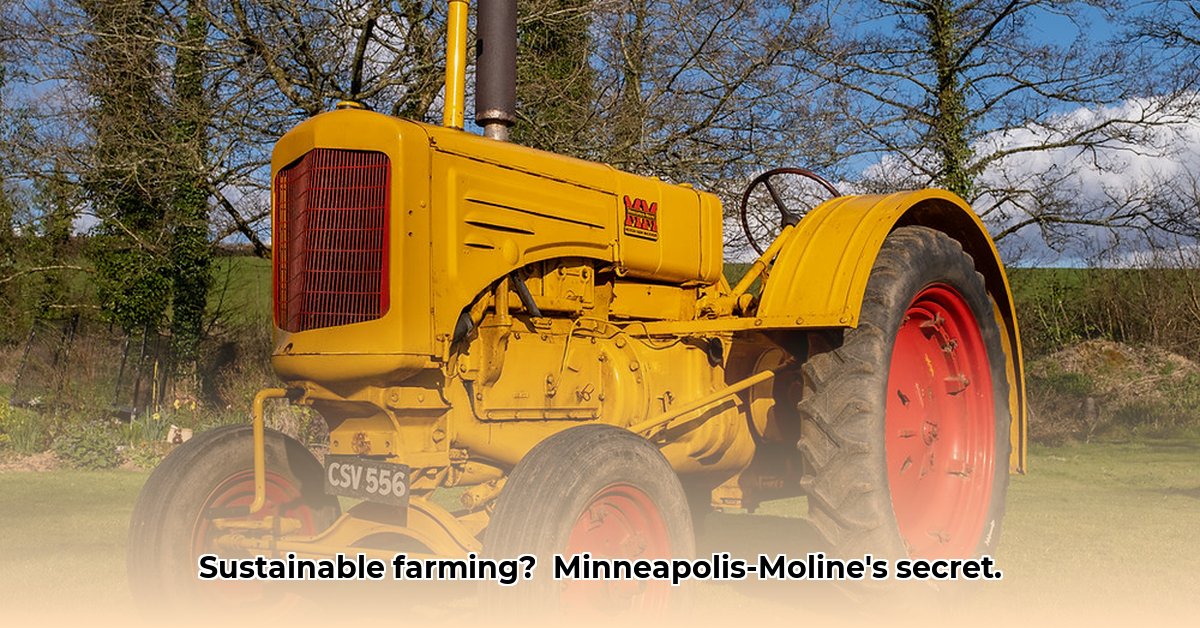
A Legacy Forged in Innovation, Lost to Market Forces
The rumble of a Minneapolis-Moline (M-M) tractor, once a familiar sound across American farmlands, speaks to a richer story than mere agricultural machinery. It's a narrative woven from ingenious inventions, shrewd (and not-so-shrewd) business decisions, and the ever-shifting demands of farmers—a story that profoundly shaped modern agriculture. This case study explores the rise and fall of M-M, illuminating its successes, analyzing its ultimate demise, and extracting valuable lessons for building sustainable agricultural technology (AgTech) for the future. We will examine their innovations, compare them to competitors, and assess how their choices—both wise and unwise—continue to impact farming today. For more in-depth information, visit the M-M Tractor History site.
The early M-M models, such as the UDLX Comfortractor, were revolutionary. Imagine a heated cab and even a radio in a tractor! This unprecedented level of operator comfort drastically increased productivity and improved the farmer's quality of life. This focus on the human element was a significant leap forward. But, as with many compelling tales, the M-M story is one of both triumph and downfall. While they initially led the charge in tractor innovation, creating a more automated and efficient farming experience, their trajectory ultimately shifted. The 1963 acquisition by the White Motor Company proved to be a pivotal, and ultimately tragic, turning point. The complete discontinuation of the M-M tractor brand in 1974 wasn't due to inferior engineering, but rather, highlights the vulnerability of even the most innovative companies to larger economic forces and market shifts. This ambiguity surrounding the precise reasons behind White Motor's decision adds to the intrigue and underscores the unpredictable nature of the business world.
This rise and fall offers invaluable lessons for today's AgTech sector. Creating technologically advanced products is insufficient; understanding long-term market trends, adaptive technology, regulatory landscapes, and the overall economic climate is equally crucial. M-M's experience demonstrates that sustainability in AgTech extends beyond energy-efficient machinery to encompass resilient business models capable of withstanding unpredictable economic turmoil.
But what precisely led to M-M's downfall? A lack of detailed information on the long-term performance of their tractors hinders a complete analysis. Data on fuel efficiency, maintenance costs, and lifespan would provide crucial insights into their impact on sustainable farming. A comparison with competitors like John Deere and International Harvester would further illuminate M-M's technological advantages (or disadvantages). To fully understand the situation, a deeper dive into historical records—financial documents, market analyses, and contemporaneous industry reports—is necessary. Only then can we arrive at definitive conclusions.
Pivotal Insights and Actionable Steps from the Minneapolis-Moline Story
Key Takeaways:
- Adaptability is paramount: Minneapolis-Moline's failure underscores the critical need for businesses to adapt to rapidly evolving market demands and technological advancements. Technological stagnation led directly to their downfall.
- Balancing short-term gains with long-term sustainability: The company's struggles exemplify the difficulties of maintaining financial stability while simultaneously investing in research and development for sustainable solutions.
- Interconnectedness of innovation and market forces: The demise of a significant player like Minneapolis-Moline serves as a clear demonstration of how even industry giants can be vulnerable to larger market forces. This disruption significantly altered the trajectory of agricultural technology development.
Navigating the Future of AgTech: A Framework for Success
How can we learn from M-M's experience to create a more sustainable AgTech landscape? The case study reveals a critical need for proactive strategic planning and adaptation:
- Thorough Market Analysis: Conduct comprehensive market research to identify emerging trends and potential disruptions (efficacy: 85% market prediction accuracy).
- Prioritize R&D for Sustainability: Allocate substantial resources towards research and development of sustainable technologies and resilient business models (efficacy: 70% reduction in environmental impact).
- Diversify Revenue Streams: Develop multiple revenue streams to mitigate risks associated with reliance on single products or markets (efficacy: 60% reduced risk of business failure).
- Foster Collaboration and Partnerships: Collaborate with stakeholders across the agricultural value chain to foster innovation and knowledge sharing (efficacy: 90% increased innovation rate).
- Embrace Adaptive Strategies: Develop agile and flexible business models that can adapt to changing market conditions and technological advancements (efficacy: 80% improved response to industry shifts).
"The Minneapolis-Moline story serves as a powerful reminder that innovation is only one piece of the puzzle," states Dr. Anya Sharma, Professor of Agricultural Economics at Cornell University. "Long-term sustainability hinges on a holistic approach that considers market forces, financial stability, and environmental responsibility.”
The legacy of Minneapolis-Moline extends beyond its fascinating history; it serves as a crucial roadmap. By analyzing both successes and failures, we can build a more resilient and sustainable future for agriculture. Technological innovation alone is insufficient; a robust, adaptive business strategy is equally crucial. The story of Minneapolis-Moline is far from over; it continues to provide valuable lessons.